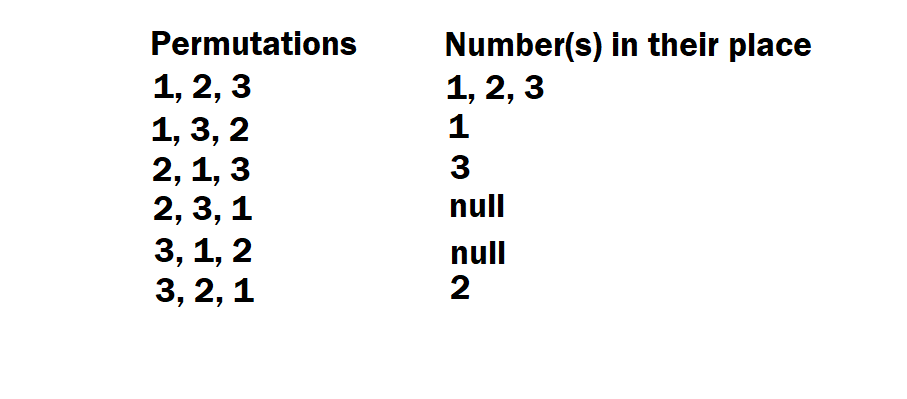Happy New Year everyone!
You probably know what a factorial is.
$$n!=n \left(n-1\right)\left(n-2\right)\left(n-3\right)\times3\times2\times1$$
Or, if you like calculus:
$$x!=\int_{0}^{\infty} t^x{e^{-t}} dt$$
Like, for example, 8! = 8\(\times\) 7\(\times\)6\(\times\)5\(\times\)4\(\times\)3\(\times\)2\(\times\)1 = 40,320.
However, what if we put two exclamation marks? Or a dollar sign? Well today, I am going to show you.
Table of Contents
Double Factorial
The name comes from the fact that instead of using \(x!\) for the notation, we use \(x!!\).
No, \(x!!\) does not mean “take the factorial of the factorial”. If you use this definition, 8!! will be 40320!, or \(3.4343 \times 10^{168186}\). This number is huge, and it ends with 10,076 zeroes.
So, we choose a better approximation.
If \(x\) is even, then here is the definition of double factorial:
$$x!!=x\left(x-2\right)\left(x-4\right)\left(x-6\right)\cdots\times4\times2$$
If \(x\) is odd, then here is the definition of double factorial:
$$x!!=x\left(x-2\right)\left(x-4\right)\left(x-6\right)\cdots\times3\times1$$
Like, 8!!. Since 8 is even, we use the first definition.
$$8!!=8\times6\times4\times2=384$$
Wow! 384 is much better than that 168,187 digit number from our amateur definition.
And 9!!. Our amateur definition gives us a 1,859,934 digit number, which ends with 90,717 zeroes. However, our !! definition for odd \(x\) gives us 945.
This might be useful when you are doing sequence and series in Calculus 2, if you want to write the product of all the even/odd numbers in a more compact form.
There are also multifactorials. Like, the triple factorial, quadruple factorial, etc. Like 11!!!!. 11 has a remainder of 3 when divided by 4 (the number of exclamation marks). So, the positive numbers below 11 that have remainder 3 when divided by 4 are 7 and 3. So,
$$11!!!!=11\times7\times3=231$$
Subfactorial
What if instead of \(x!\), we have \(!x\)? That is called the subfactorial.
You know that the factorial is the number of ways to arrange \(n\) items. Well, the subfactorial is the number of ways to arrange \(n\) items such that none of these items end up in their original position. Like, take !3. The number of permutations of 3 items is 6. But what about the number of permutations of 3 items such that none of the items are in their spot?

The number of “null”s in column 2 is 2. So, !3 is 2.
The formula for !n is:
$$!x=x!\left(1-\frac{1}{1!}+\frac{1}{2!}\cdots{(-1)^x}\frac{1}{x!}\right)$$
So now, what is !6? Instead of thinking of permutations, we think about the formula. (By the way, this formula is one of the many factorial formulas on this list which involve the regular factorial.)
$$!6=6!\left(1-\frac{1}{1!}+\frac{1}{2!}-\frac{1}{3!}+\frac{1}{4!}-\frac{1}{5!}+\frac{1}{6!}\right)$$
That simplifies to 265.
There are no “multisubfactorials”: something like !!x or !!!!x does not exist. The truth is, we ran out of exclamation marks. We will be using other symbols from now on.
Primorial
Primorial has a # sign as notation. The word “primorial” looks like “prime” here.
$$x\# = \prod_{p{\lt}k}p$$
Where \(p\) is prime.
So, \(6\#=5\times3\times2=30\), and \(5\#=5\times3\times2=30\) as well.
Super Factorial
The thing with the super factorial is that there are 2 versions.
Sloane Super Factorial
This version of the super factorial was discovered by Neil Sloane, creator of the helpful Online Encyclopedia of Integer Sequences.
$$\text{sf}(n)=n!\left(\left(n-1\right)!\right)\left(\left(n-2\right)!\right) \left(\left(n-3\right)!\right)\cdots\times2\times1$$
Say, \(\text{sf}(9)\). That will be \(1\times2\times6\times24\times120\times720\times5040\times40320\times362880=1834933472251084800000\).
Pickover Super Factorial
Clifford Pickover’s Super Factorial is even super-er than Sloane’s version.
It’s notation is not “sf”, but it is a $ sign.
$$n\$={^{n!}}n!$$
Now, you might be wondering, “why did you put the exponent before the \(n!\)?”, that is because this is a new operation, “titration”. Titration is basically repeated exponentiation; in other words, just a “power tower” with height \(n!\).
$$6\$={^{720}}720=720^{720^{720^{720^{\cdots^{720}}}}}$$
The number of “720”s in this power tower is exactly 720. This number is too big to be calculated.
Exponential Factorial
This is quite confusing, because this factorial uses the same notation as Pickover’s SF.
$$n\$=n^{{n-1}^{{n-2}^{{n-3}^{{\cdots}^{{2}^{{1}}}}}}}$$
So, \(5\$=5^{4^{3^{2^{1}}}}=6.2061\times10^{183230}\).
Hyper Factorial
This is our last factorial, and this is the hyper factorial!
$$H(n)=n^n{(n-1)^{n-1}}{(n-2)^{n-2}}{\cdots}\times{2^{2}}\times{1^{1}}$$
\(H(3)=3^3\times2^2\times1^1=27\times4\times1=108\).
And, \(H(6)=6^6\times5^5\times4^4\times3^3\times2^2\times1^1=46656\times3125\times256\times27\times4\times1=4031078400000\).
Those are the 6 factorials I wanted to show. See you next time! Bye!